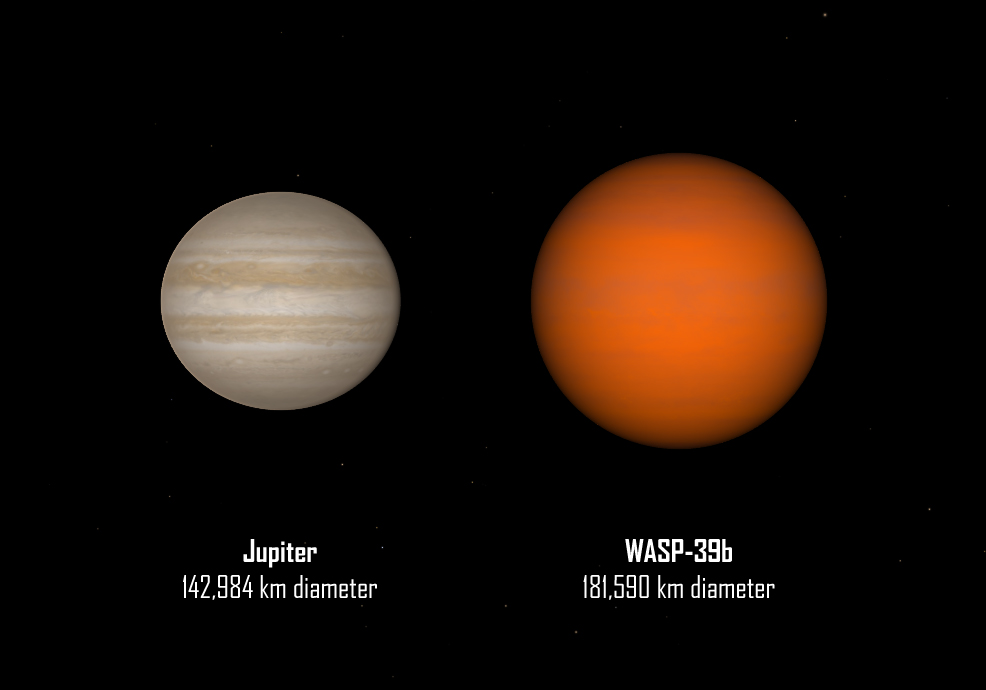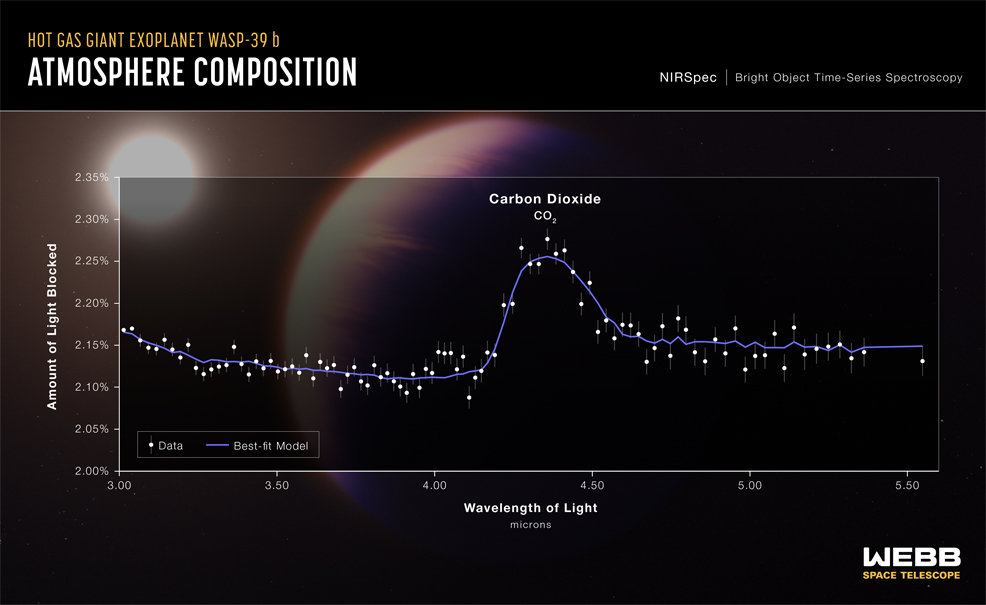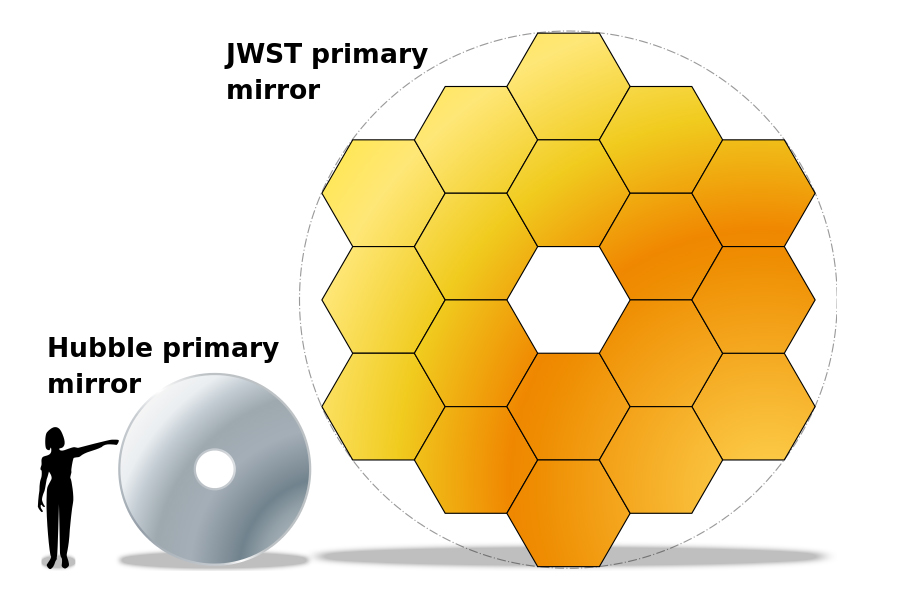
27th August 2022 First detection of CO2 in atmosphere of exoplanet The James Webb Space Telescope (JWST) has captured the first clear evidence for carbon dioxide (CO2) in the atmosphere of a planet beyond our Solar System.
WASP-39b is a so-called "hot Jupiter" discovered in 2011 by the Wide Angle Search for Planets (WASP), an international project run by teams of astronomers in South Africa and Spain. The planet is 1.27 times the diameter of Jupiter but has only 28% of its mass. It orbits just 0.0486 AU (7.3 million km) from its star, taking only 4.1 days to complete one "year" and resulting in a temperature of 900°C (1,600°F). The parent star WASP-39 is of spectral class G – the same type as our own Sun – and just slightly smaller than the Sun. The system is 698 light years from Earth in the Virgo constellation. Previous observations from telescopes including Hubble and Spitzer revealed the presence of water vapour, sodium, and potassium in the planet's atmosphere. Last month, it became the first exoplanet to be studied by the recently launched James Webb Space Telescope (JWST) and this week NASA released the data from those observations. Webb's unmatched infrared sensitivity has now confirmed the presence of carbon dioxide on this planet as well.
Scientists used Webb's Near-Infrared Spectrograph (NIRSpec) to determine the atmospheric composition of WASP-39b. In the resulting spectrum, a small hill between 4.1 and 4.6 microns presents the first clear, detailed evidence for carbon dioxide ever detected in a planet outside our Solar System. "As soon as the data appeared on my screen, the whopping carbon dioxide feature grabbed me," said Zafar Rustamkulov, a graduate student at Johns Hopkins University and member of the JWST Transiting Exoplanet Community Early Release Science team, which undertook this investigation. "It was a special moment, crossing an important threshold in exoplanet sciences." No observatory has ever measured such subtle differences in brightness of so many individual colours across the 3 to 5.5-micron range in an exoplanet transmission spectrum before. Access to this part of the spectrum is vital for measuring abundances of gases like water and methane, as well as carbon dioxide, which are thought to exist in many different types of exoplanets. Understanding the composition of a planet's atmosphere is important because it tells us about the origin of the planet and how it evolved. "Carbon dioxide molecules are sensitive tracers of the story of planet formation," said Mike Line of Arizona State University, another team member. "By measuring this carbon dioxide feature, we can determine how much solid versus how much gaseous material was used to form this gas giant planet. In the coming decade, JWST will make this measurement for a variety of planets – providing insight into the details of how planets form and the uniqueness of our own Solar System." "Detecting such a clear signal of CO2 on WASP-39b bodes well for the detection of atmospheres on smaller, terrestrial-sized planets," said Natalie Batalha of the University of California at Santa Cruz, who leads the team.
Credit: Bobarino, CC BY-SA 3.0, via Wikimedia Commons
Comments »
If you enjoyed this article, please consider sharing it:
|









